How do you Install Oracle 12c Release 2 On Oracle Linux 6 and Oracle Linux 7
This tutorial describes the installation of Oracle Database 12c Release 2 (12.2) 64-bit on Oracle Linux 6 (OL6) and 7 (OL7) 64-bit. The article is based on a server installation with a minimum of 2G swap and secure Linux set to permissive. An example of this type of Linux installation can be seen here (OL6 or OL7).
Download the Oracle software from OTN or MOS depending on your support status.
- OTN: Oracle Database 12c Release 2 (12.2.0.1) Software (64-bit).
- edelivery: Oracle Database 12c Release 2 (12.2.0.1) Software (64-bit)
Unpack Files
Unzip the file.
unzip linuxx64_12201_database.zip
You should now have a single directory called "database" containing installation files.
Hosts File
The "/etc/hosts" file must contain a fully qualified name for the server.
<IP-address> <fully-qualified-machine-name> <machine-name>
For example.
127.0.0.1 localhost localhost.localdomain localhost4 localhost4.localdomain4 192.168.56.107 ol7-122.localdomain ol7-122
Set the correct hostname in the "/etc/hostname" file.
ol7-122.localdomain
Oracle Installation Prerequisites
Perform either the Automatic Setup or the Manual Setup to complete the basic prerequisites. The Additional Setup is required for all installations.
Automatic Setup
If you plan to use the "oracle-database-server-12cR2-preinstall" package to perform all your prerequisite setup, issue the following command.
# yum install oracle-database-server-12cR2-preinstall -y
It is probably worth doing a full update as well, but this is not strictly speaking necessary.
# yum update -y
It's worth running the all the YUM commands listed in the manual setup section. Depending on the OS package groups you have selected, some additional packages might also be needed.
Manual Setup
If you have not used the "oracle-database-server-12cR2-preinstall" package to perform all prerequisites, you will need to manually perform the following setup tasks.
Add the following lines to the "/etc/sysctl.conf" file, or in a file called "/etc/sysctl.d/98-oracle.conf".
fs.file-max = 6815744 kernel.sem = 250 32000 100 128 kernel.shmmni = 4096 kernel.shmall = 1073741824 kernel.shmmax = 4398046511104 kernel.panic_on_oops = 1 net.core.rmem_default = 262144 net.core.rmem_max = 4194304 net.core.wmem_default = 262144 net.core.wmem_max = 1048576 net.ipv4.conf.all.rp_filter = 2 net.ipv4.conf.default.rp_filter = 2 fs.aio-max-nr = 1048576 net.ipv4.ip_local_port_range = 9000 65500
Run the following command to change the current kernel parameters.
/sbin/sysctl -p
Add the following lines to a file called "/etc/security/limits.d/oracle-database-server-12cR2-preinstall.conf" file.
oracle soft nofile 1024 oracle hard nofile 65536 oracle soft nproc 16384 oracle hard nproc 16384 oracle soft stack 10240 oracle hard stack 32768 oracle hard memlock 134217728 oracle soft memlock 134217728
Someone in the comments suggested you might need to add the previous lines into the "/etc/security/limits.conf" file also for CentOS7. This is definitely not needed for OL7, but worth considering if the installer gives prerequisite failures for these settings.
The following packages are listed as required, including the 32-bit version of some of the packages. Many of the packages should be installed already.
# OL6 and OL7 (RHEL6 and RHEL7) yum install binutils -y yum install compat-libcap1 -y yum install compat-libstdc++-33 -y yum install compat-libstdc++-33.i686 -y yum install glibc -y yum install glibc.i686 -y yum install glibc-devel -y yum install glibc-devel.i686 -y yum install ksh -y yum install libaio -y yum install libaio.i686 -y yum install libaio-devel -y yum install libaio-devel.i686 -y yum install libX11 -y yum install libX11.i686 -y yum install libXau -y yum install libXau.i686 -y yum install libXi -y yum install libXi.i686 -y yum install libXtst -y yum install libXtst.i686 -y yum install libgcc -y yum install libgcc.i686 -y yum install libstdc++ -y yum install libstdc++.i686 -y yum install libstdc++-devel -y yum install libstdc++-devel.i686 -y yum install libxcb -y yum install libxcb.i686 -y yum install make -y yum install nfs-utils -y yum install net-tools -y yum install smartmontools -y yum install sysstat -y yum install unixODBC -y yum install unixODBC-devel -y # Required for 12.1, not listed for 12.2 yum install gcc -y yum install gcc-c++ -y yum install libXext -y yum install libXext.i686 -y yum install zlib-devel -y yum install zlib-devel.i686 -y # OL6 only (RHEL6 only) yum install e2fsprogs -y yum install e2fsprogs-libs -y yum install libs -y yum install libxcb.i686 -y yum install libxcb -y
Create the new groups and users.
groupadd -g 54321 oinstall groupadd -g 54322 dba groupadd -g 54323 oper #groupadd -g 54324 backupdba #groupadd -g 54325 dgdba #groupadd -g 54326 kmdba #groupadd -g 54327 asmdba #groupadd -g 54328 asmoper #groupadd -g 54329 asmadmin #groupadd -g 54330 racdba useradd -u 54321 -g oinstall -G dba,oper oracle
Uncomment the extra groups you require.
Additional Setup
The following steps must be performed, whether you did the manual or automatic setup.
Set the password for the "oracle" user.
passwd oracle
Set secure Linux to permissive by editing the "/etc/selinux/config" file, making sure the SELINUX flag is set as follows.
SELINUX=permissive
Once the change is complete, restart the server or run the following command.
# setenforce Permissive
If you have the Linux firewall enabled, you will need to disable or configure it, as shown here or here. To disable it, do the following.
# systemctl stop firewalld # systemctl disable firewalld
If you are not using Oracle Linux and UEK, you will need to manually disable transparent huge pages.
Create the directories in which the Oracle software will be installed.
mkdir -p /u01/app/oracle/product/12.2.0.1/db_1 chown -R oracle:oinstall /u01 chmod -R 775 /u01
Putting mount points directly under root is typically a bad idea. It's done here for simplicity, but for a real installation "/" should be reserved for the OS.
Unless you are working from the console, or using SSH tunnelling, login as root and issue the following command.
xhost +<machine-name>
The scripts are created using the
cat command, with all the "$" characters escaped. If you want to manually create these files, rather than using the cat command, remember to remove the "\" characters before the "$" characters.
Create a "scripts" directory.
mkdir /home/oracle/scripts
Create an environment file called "setEnv.sh".
cat > /home/oracle/scripts/setEnv.sh <<EOF # Oracle Settings export TMP=/tmp export TMPDIR=\$TMP export ORACLE_HOSTNAME=ol7-122.localdomain export ORACLE_UNQNAME=cdb1 export ORACLE_BASE=/u01/app/oracle export ORACLE_HOME=\$ORACLE_BASE/product/12.2.0.1/db_1 export ORACLE_SID=cdb1 export PATH=/usr/sbin:/usr/local/bin:\$PATH export PATH=\$ORACLE_HOME/bin:\$PATH export LD_LIBRARY_PATH=\$ORACLE_HOME/lib:/lib:/usr/lib export CLASSPATH=\$ORACLE_HOME/jlib:\$ORACLE_HOME/rdbms/jlib EOF
Add a reference to the "setEnv.sh" file at the end of the "/home/oracle/.bash_profile" file.
echo ". /home/oracle/scripts/setEnv.sh" >> /home/oracle/.bash_profile
Create a "start_all.sh" and "stop_all.sh" script that can be called from a startup/shutdown service. Make sure the ownership and permissions are correct.
cat > /home/oracle/scripts/start_all.sh <<EOF #!/bin/bash . /home/oracle/scripts/setEnv.sh export ORAENV_ASK=NO . oraenv export ORAENV_ASK=YES dbstart \$ORACLE_HOME EOF cat > /home/oracle/scripts/stop_all.sh <<EOF #!/bin/bash . /home/oracle/scripts/setEnv.sh export ORAENV_ASK=NO . oraenv export ORAENV_ASK=YES dbshut \$ORACLE_HOME EOF chown -R oracle.oinstall /home/oracle/scripts chmod u+x /home/oracle/scripts/*.sh
Once the installation is complete and you've edited the "/etc/oratab", you should be able to start/stop the database with the following scripts run from the "oracle" user.
~/scripts/start_all.sh ~/scripts/stop_all.sh
You can see how to create a Linux service to automatically start/stop the database
Installation
Log into the oracle user. If you are using X emulation then set the DISPLAY environmental variable.
DISPLAY=<machine-name>:0.0; export DISPLAY
Start the Oracle Universal Installer (OUI) by issuing the following command in the database directory.
./runInstaller
Proceed with the installation of your choice.

2.Select Install Option
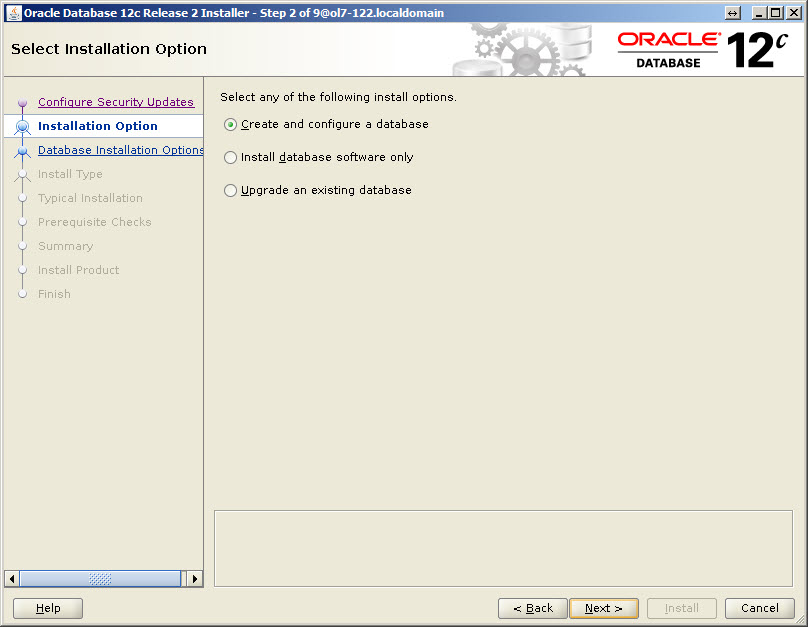
3.Select System Class
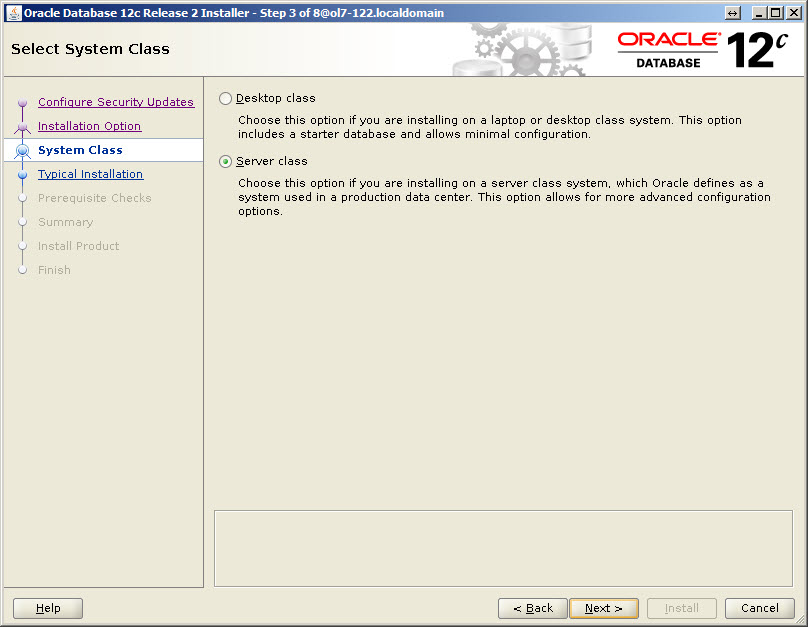
4.Select Database Installation Option
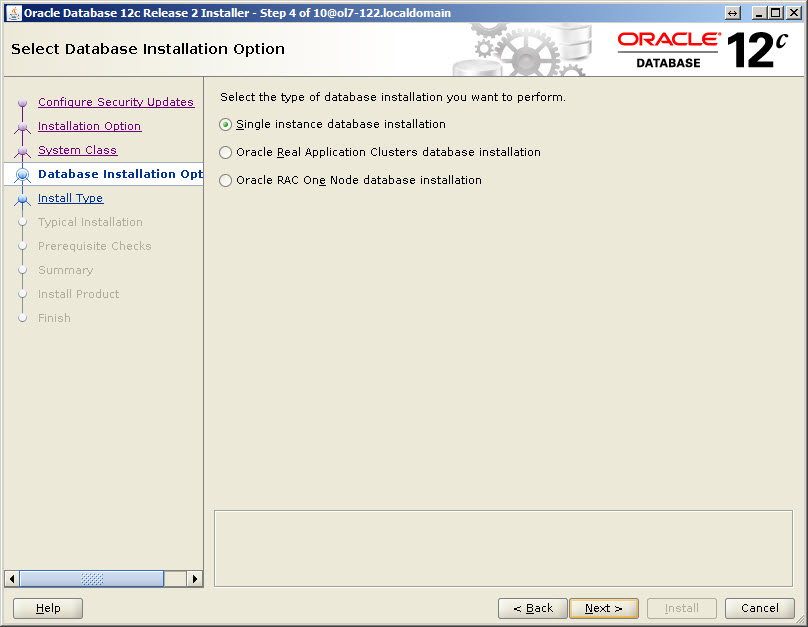
5.Select Install Type
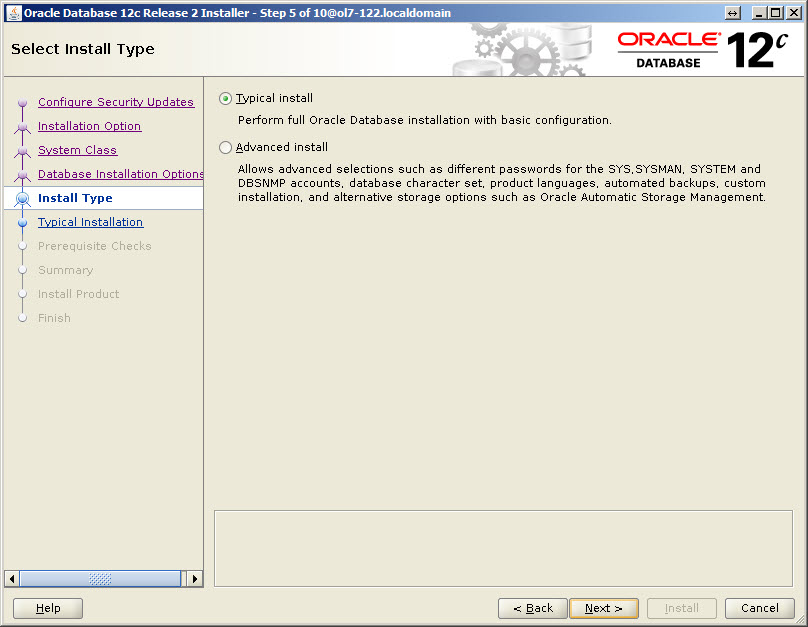
6.Typical Install Configuration

7.Create Inventory
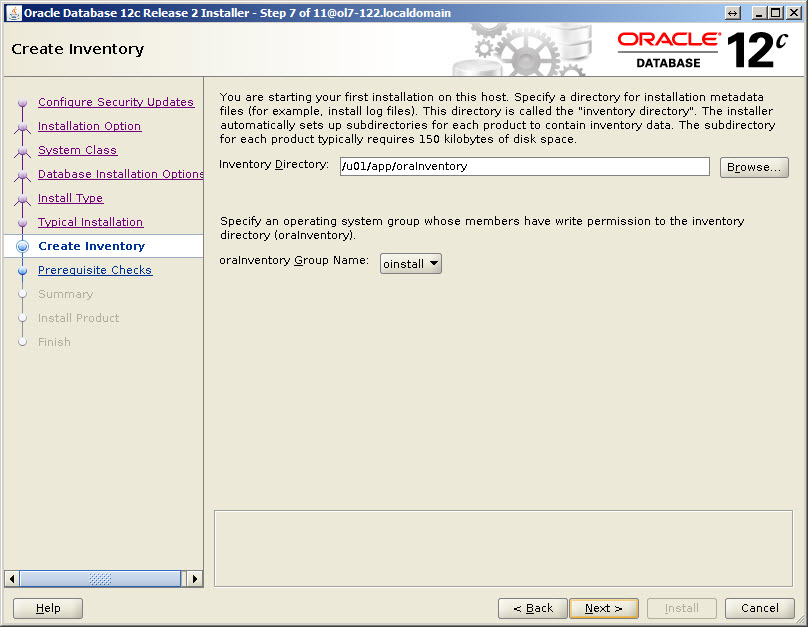
8.Perform Prerequisite Checks
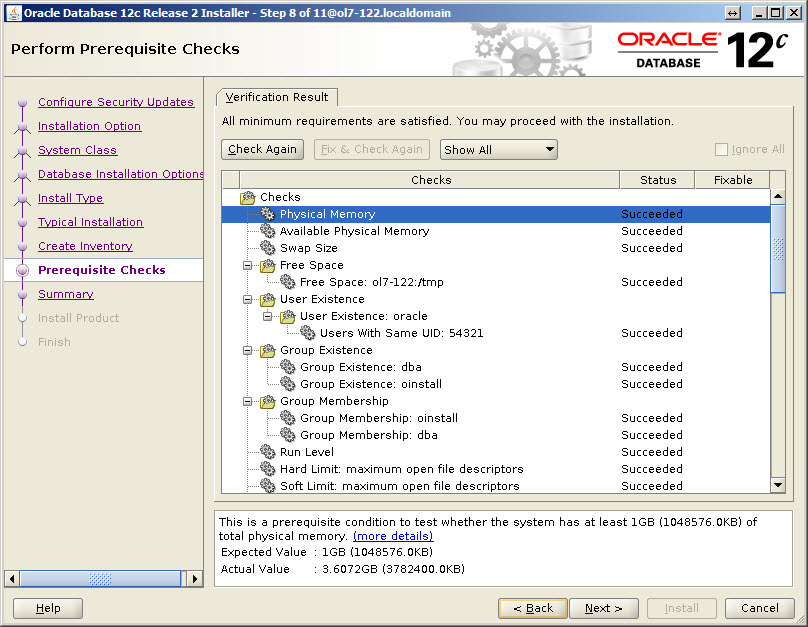
9.Summary
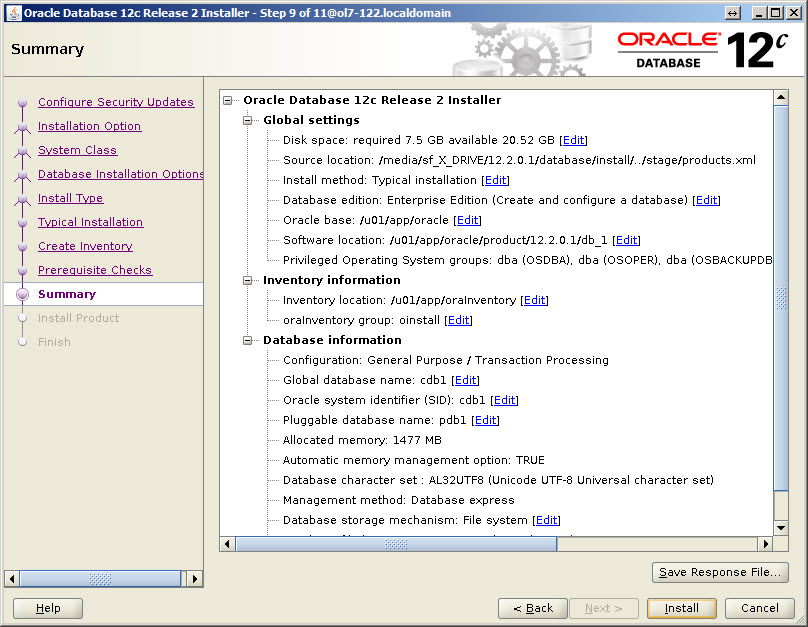
10.install Product
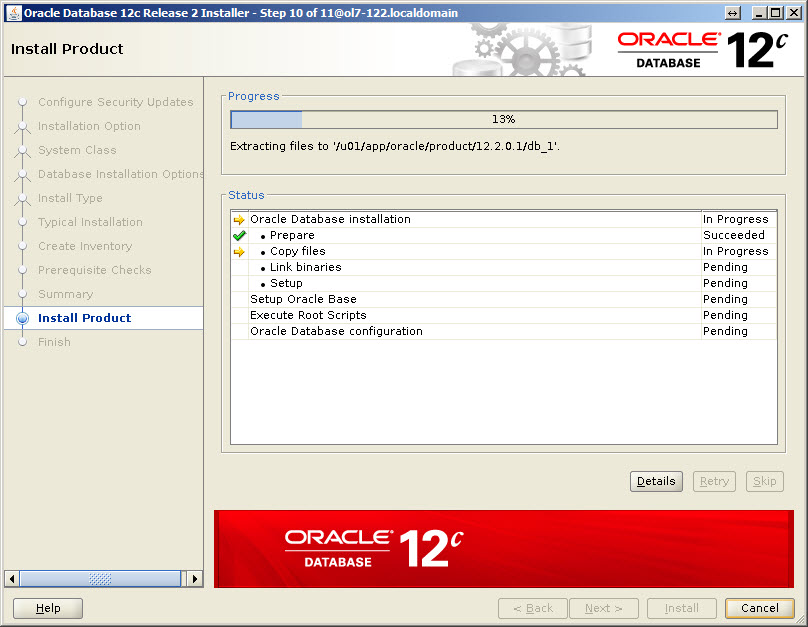
11.Execute Configuration Scripts
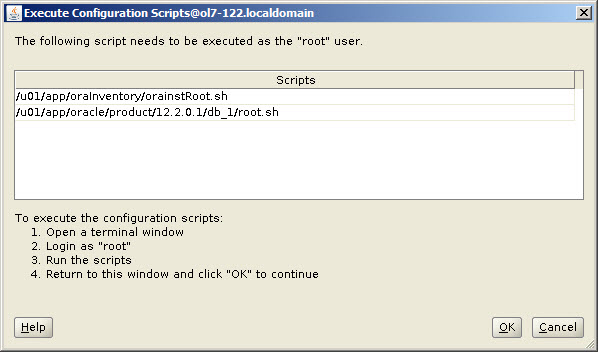
12.Database Configuration Assistant
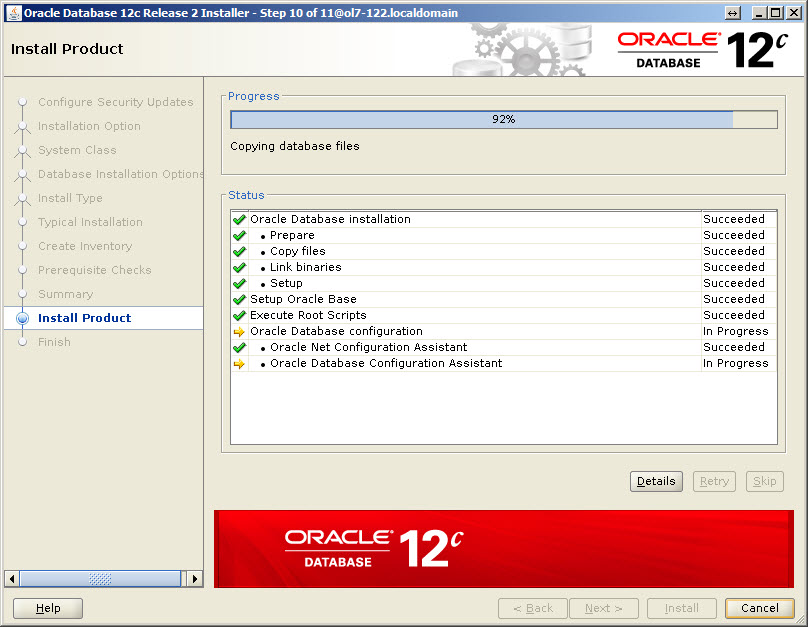
13.Finish
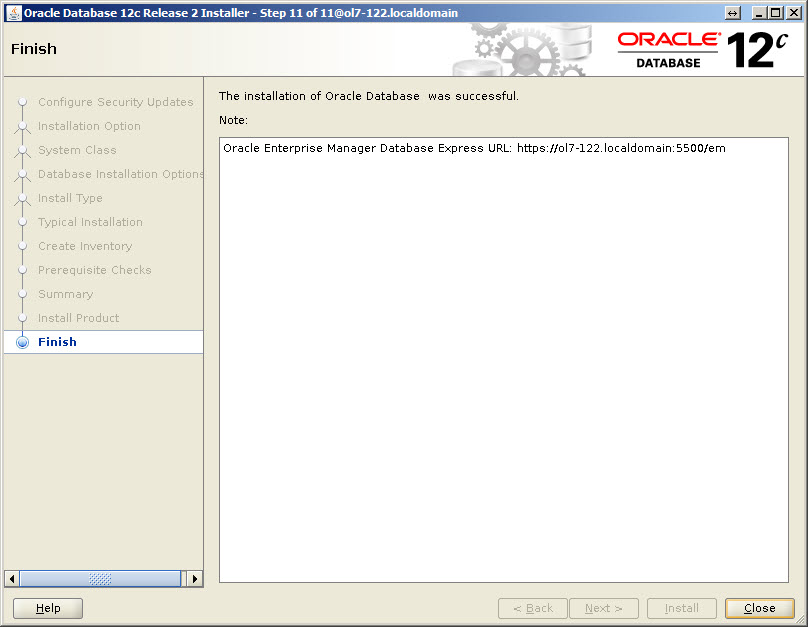
14.Database Express 12c Login
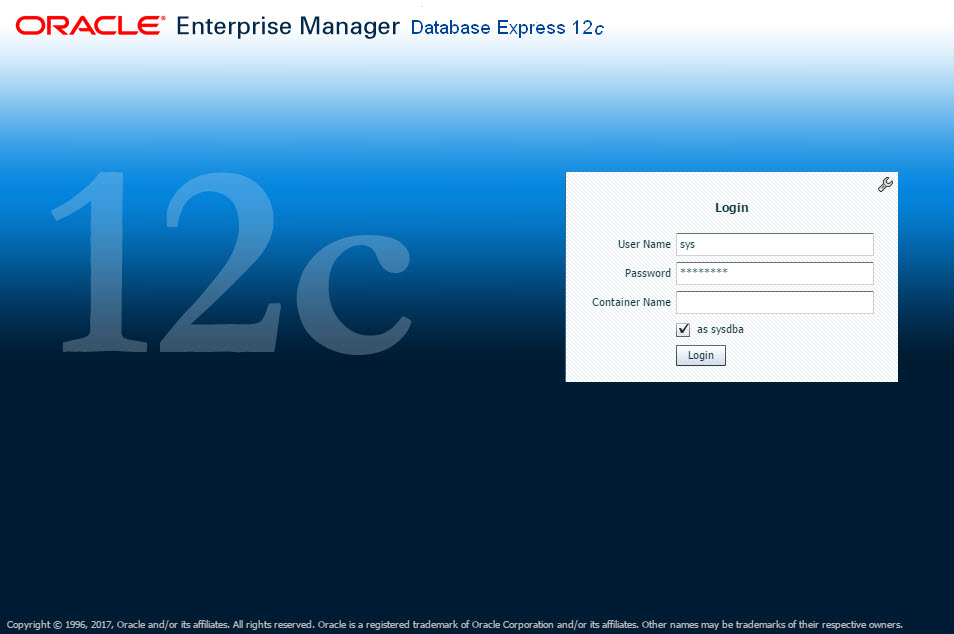
15.Database Express 12c Dashboard
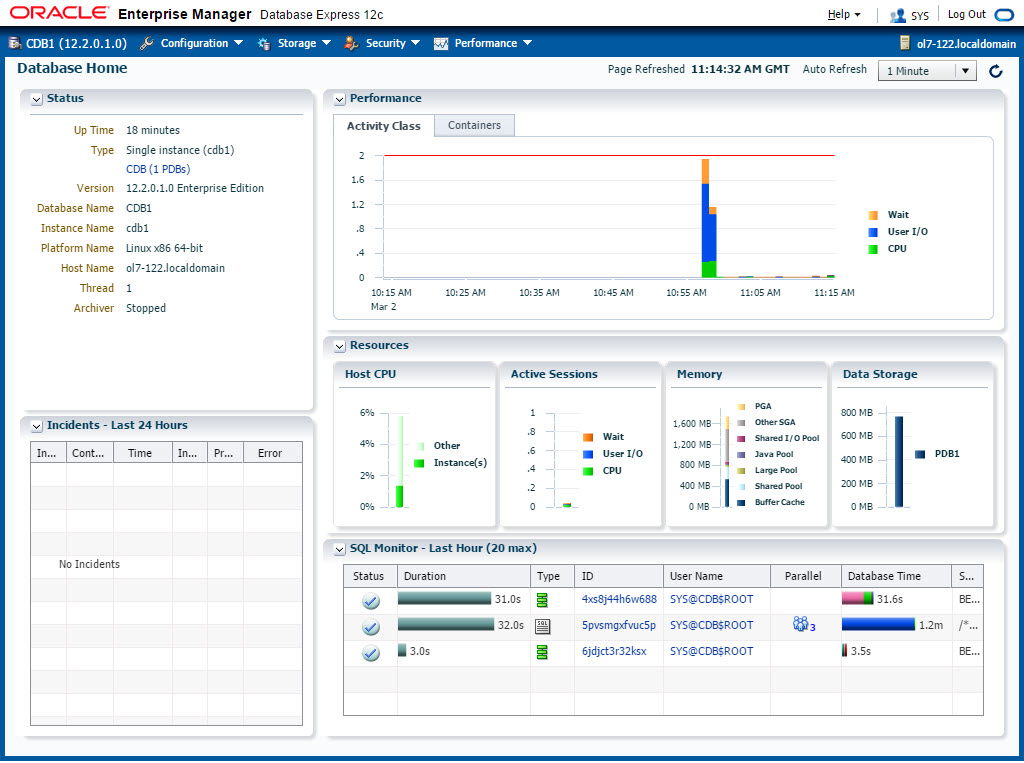
The "Database Configuration Assistant Complete" screen displays the Database Express 12c URL, which will be something like "https://ol7-122.localdomain:5500/em".
Post Installation
Edit the "/etc/oratab" file setting the restart flag for each instance to 'Y'.
cdb1:/u01/app/oracle/product/12.2.0.1/db_1:Y
Comments
Post a Comment